Papers by Matteo Cantisani
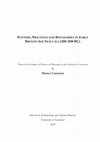
This thesis is a detailed study of painted and unpainted pottery in Castelluccio ceramic assembla... more This thesis is a detailed study of painted and unpainted pottery in Castelluccio ceramic assemblages in Early Bronze Age Sicily (2300-1500 BC). The aim is not to perpetuate current definitions of static, culture-bearing regional grouping. Instead, the aim of my work is to explore morphometric variability as a representation of social boundaries and practices. The main purpose of such a work is to link material culture with society. So far, this task has remained a neglected topic in Sicilian EBA specialist studies, while current models of socio-cultural transformations rely on external sources as main drivers for local developments. My work will open up alternative understanding of local developments emphasising the centrality and embeddedness of material culture in mechanisms of socio-cultural reproduction as needed, initiating a broader re-assessement of Castelluccio cultural groupings and social organisation.

In the prehistoric Mediterranean, it seems plausible that sulphur was incorporated into society n... more In the prehistoric Mediterranean, it seems plausible that sulphur was incorporated into society not only for economic reasons but also as a cultural resource that transformed and was transformed by local ways of living and identities. Processual theoretical approaches have highlighted how human collectives economically benefit from resources, however, recent anthropological research has illuminated how the threads of human cultures, identities, perceptions, experiences and the landscape become interwoven. Drawing upon the latter, contemporary archaeological theory is becoming increasingly concerned with understanding how to incorporate natural resources in this entanglement of cultural, sensorial and natural dimensions as an active force. Within this framework, this paper tackles the appropriation of sulphur in Early Bronze Age Sicily (EBA, ca. 2300-1500 BC), ultimately focusing on identities that might have emerged through engaging with this mineral within a natural and built lands...
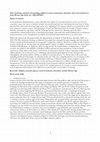
Sage. Preprint, 2021
In the prehistoric Mediterranean, it seems plausible that sulphur was incorporated into society n... more In the prehistoric Mediterranean, it seems plausible that sulphur was incorporated into society not only for economic reasons but also as a cultural resource that transformed and was transformed by local ways of living and identities. Processual theoretical approaches have highlighted how human collectives economically benefit from resources, however, recent anthropological research has illuminated how the threads of human cultures, identities, perceptions, experiences and the landscape become interwoven. Drawing upon the latter, contemporary archaeological theory is becoming increasingly concerned with understanding how to incorporate natural resources in this entanglement of cultural, sensorial and natural dimensions as an active force. Within this framework, this paper tackles the appropriation of sulphur in Early Bronze Age Sicily (EBA, ca. 2300-1500 BC), ultimately focusing on identities that might have emerged through engaging with this mineral within a natural and built landscape for cooperative/competitive relations. Therefore, it addresses life worlds in resource landscapes by drawing upon the archaeological evidence of sulphur extraction in the case-study region of Palma di Montechiaro, in Agrigento, Sicily. It suggests that the transformation of sulphur into a cultural resource was related to the identities of dwellers, miners and non-kin that emerged as a result of shared experiences within wider social arenas of interaction. It will propose that the sensory experience of the smell of sulphur played a role in this process by combining a phenomenological approach to raw materials with ethnographic and archaeometric evidence of sulphur's extraction process. To discuss this, I will review data regarding traditional technologies of extraction in the case study area, complemented by a re-assessment of the social and cultural practices in the excavated EBA settlement of Monte Grande, which comprises a thick description of the archaeological evidence for the smelting and extraction of sulphur. Finally, I propose an interpretation of how the relations that bound the local community together emerged from these interwoven engagements with, and responses to, the smells of the smelting process. In contrast to current interpretations, such an approach demonstrates how sulphur was more than just a commodity to exchange.
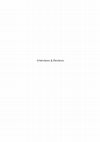
Ex Novo: Journal of Archaeology
Fabio Fogliazza è il tecnico per la preparazione di fossili presso la sezione di Paleontologia de... more Fabio Fogliazza è il tecnico per la preparazione di fossili presso la sezione di Paleontologia del Museo di Storia Naturale di Milano, nonché illustratore scientifico ed artista di fama internazionale. Una delle sue opere più famose è la scultura “L’Uomo di Neanderthal”, oggi esposta in via permanente al Museo de la Evolución Humana di Burgos (Spagna). In molte sue opere Natura e Uomo vengono riprodotti secondo processi creativi, ponendosi di fatto come piece d’art dalla forte carica emotiva, in grado di suggestionare il pubblico nonostante la distanza geografica e temporale che spesso intercorre tra chi osserva e il soggetto rappresentato. Come redazione siamo entusiasti della possibilità di discutere con Fabio Fogliazza alcune tra queste sue opere in questo numero di Ex Novo, in cui tematiche di management, tutela di beni naturali e conservazione vengono non solo trattate attraverso le lenti scientifiche del sapere ma discutendo anche di approcci in cui emozioni ed esperienze sens...
Arqueologia Iberoamericana 46, 2020
This paper focuses on the potential application of GIS (Geographical Information Systems) to the ... more This paper focuses on the potential application of GIS (Geographical Information Systems) to the management of archaeological excavations. Based on the case studies of Huataviro and Las Orquideas (Imbabura, Ecuador), its usefulness is discussed and the challenges of the application of these systems to store, manage and analyze excavation data are studied. KEYWORDS . GIS; photogrammetry; documentation.
Através da observação dos problemas na gestão e valorização do património artístico na Itália, um... more Através da observação dos problemas na gestão e valorização do património artístico na Itália, um projecto independente em matéria de promoção cultural e de investigação nasceu na área que inclui as províncias de Reggio Emilia e Parma (Emilia-Romagna, Itália). O grupo que promove a empresa elaborou um sistema virtuoso que visa envolver uma grande parte da sociedade e das instituições que protegem os bens. Os objectivos do projecto são trazer uma ajuda para o crescimento económico e cultural da área escolhida. Como resultado, nós queremos transformar arqueólogos em um recurso capaz de descobrir as capacidades mais adequadas e estratégias para promover o território. Depois de uma breve descrição da situação italiana e como intervir para melhorá-lo, o projecto, que estamos trabalhando, será exposto.
Através da observação dos problemas na gestão e valorização do património artístico na Itália, um... more Através da observação dos problemas na gestão e valorização do património artístico na Itália, um projecto independente em matéria de promoção cultural e de investigação nasceu na área que inclui as províncias de Reggio Emilia e Parma (Emilia-Romagna, Itália). O grupo que promove a empresa elaborou um sistema virtuoso que visa envolver uma grande parte da sociedade e das instituições que protegem os bens. Os objectivos do projecto são trazer uma ajuda para o crescimento económico e cultural da área escolhida. Como resultado, nós queremos transformar arqueólogos em um recurso capaz de descobrir as capacidades mais adequadas e estratégias para promover o território. Depois de uma breve descrição da situação italiana e como intervir para melhorá-lo, o projecto, que estamos trabalhando, será exposto.
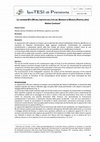
RIASSUNTO Le capanne B3 e B9, collocate al margine sud-occidentale del settore B dell'abitato di ... more RIASSUNTO Le capanne B3 e B9, collocate al margine sud-occidentale del settore B dell'abitato di Mursia identificano un momento di frequenti ristrutturazioni degli apparati residenziali. Caratterizzate da componenti architettoniche e planimetrie tipiche della fase iniziale del settore, mostrano evidenti tracce di una frequentazione senza soluzione di continuità che va in parallelo con le modificazioni strutturali. La ricostruzione della sequenza stratigrafica, l'analisi dei processi formativi della cultura materiale recuperata, lo studio sull'uso degli spazi associato a specifici patterns di distribuzione spaziale degli oggetti nonostante i limiti di conservazione del contesto hanno evidenziato un processo di formazione del record archeologico dinamico e mai intervallato da netti elementi di discontinuità. ABSTRACT The hut B3 and B9, located on the southwestern edge of Sector B of the prehistoric settlement of Mursia, identify frequent structural changes inside the residential unit. The huts are characterized by architectural components and floor plans typical of the early phase of this part of the settlement and show clear traces of continuous occupation in spite of the architectural rearrangement. The reconstruction of the stratigraphic sequence, the analysis of the formation processes of the material culture, the study on the use of the space associated with specific patterns of spatial distribution of objects showed a process of formation of the archaeological record dynamic and never interrupted by clear elements of discontinuity.
Conference presentations by Matteo Cantisani

Monte Grande has been interpreted as an Early Bronze Age (EBA) coastal sanctuary. It is situated ... more Monte Grande has been interpreted as an Early Bronze Age (EBA) coastal sanctuary. It is situated 20km SE of Agrigento, Sicily. It is argued how a contextual study of it can further elucidate aspects of EBA social scenarios poorly understood, such as contexts and ways of interaction between local groups. 2016 summer fieldwork activities, comprised of stylistic examination of 240 diagnostic fragments, show indeed evidence of material connections, such as shared vessel morphologies and stylistic patterns which appear to signal the extent to which objects -and people- could have moved around Monte Grande. Was it a landmark, a ‘sanctuary, a political focal centre for indigenous meetings? Though further examination of other aspects related to ceramics (e.g. use and consumption) will be beneficial to a more comprehensive understanding of the role Monte Grande might have played in the local social arena, preliminary stylistic analysis of pottery allowed to begin interpreting contexts and character of such interactions between EBA communities, setting the background for a more comprehensive understanding of the social practices behind such interactions and their significance in social terms.

A first analysis of the pottery production from Mursia was carried on in the 60s by Tozzi, follow... more A first analysis of the pottery production from Mursia was carried on in the 60s by Tozzi, followed by other typological studies aimed to understand both chronological development of the settlement dynamics and Rodì-Tindari-Vallelunga (RTV) morpho-stylistic patterns. Archaeometric analysis on some samples from the site have been carried on only recently to infer differences in technology in between RTV and Castelluccio productions. It is worth to note the absence of specific studies addressed to the comprehension of the social organization of production first, as a preliminary step towards a better understanding of material patterns of technological changes in between different communities. The results presented in this paper show first the existence of well-defined "islander" pottery production. It seems to own specific technological features and, as spatial analysis results showed, it is related to a dynamic and articulated social context development.
Posters by Matteo Cantisani
Ex Novo Journal of Archaeology by Matteo Cantisani
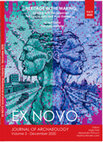
Ex Novo Journal of Archaeology, Volume 5 , 2020
The fifth volume of Ex Novo has the pleasure to host Flaminia Bartolini as guest editor for the s... more The fifth volume of Ex Novo has the pleasure to host Flaminia Bartolini as guest editor for the special issue titled Heritage in the Making. Dealing with Legacies of Fascist Italy and Nazi Germany. This collection of peer-reviewed papers stems in part from the successful workshop held at McDonald Institute for Archaeological Research, University of Cambridge in December 2018 under the aegis of the DAAD-Cambridge Hub. The event gathered several international heritage experts and professionals from both Germany and Italy to explore the complexities of handling Heritage related to Fascism and National Socialism.
The selection of papers contribute much to the debate on the shifting conditions of the reception of dictatorial regimes, and more specifically the fate of fascist material legacies from the aftermath of WWII to the present day.
The second part of this volume includes an additional contribution by Aydin Abar which keeps in with the broad theme of political reappropriation of the past lying at the core of Bartolini’s collection of papers but strays away from their geographical focus by extending the analysis to the exploitation of Achaemenian material legacies in reinforcing nationalist narratives in nineteenth and twentieth century Iran.
Ex Novo Journal of Archaeology Invites contributions for the 2021 issue on the topic:
Conferences and Sessions by Matteo Cantisani
The document summarizes Session 313's main points
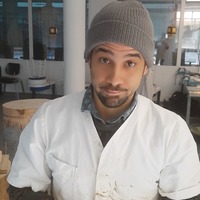
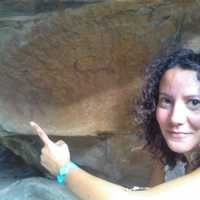



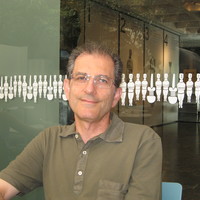
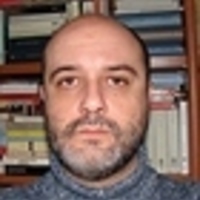
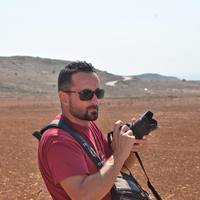
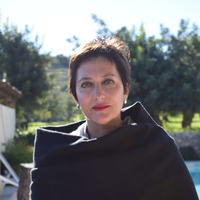
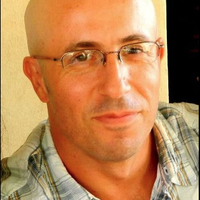
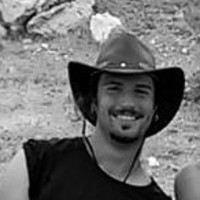
Uploads
Papers by Matteo Cantisani
Conference presentations by Matteo Cantisani
Posters by Matteo Cantisani
Ex Novo Journal of Archaeology by Matteo Cantisani
The selection of papers contribute much to the debate on the shifting conditions of the reception of dictatorial regimes, and more specifically the fate of fascist material legacies from the aftermath of WWII to the present day.
The second part of this volume includes an additional contribution by Aydin Abar which keeps in with the broad theme of political reappropriation of the past lying at the core of Bartolini’s collection of papers but strays away from their geographical focus by extending the analysis to the exploitation of Achaemenian material legacies in reinforcing nationalist narratives in nineteenth and twentieth century Iran.
Conferences and Sessions by Matteo Cantisani
https://resoc-conference.github.io/DBM/Home_conference.html
The selection of papers contribute much to the debate on the shifting conditions of the reception of dictatorial regimes, and more specifically the fate of fascist material legacies from the aftermath of WWII to the present day.
The second part of this volume includes an additional contribution by Aydin Abar which keeps in with the broad theme of political reappropriation of the past lying at the core of Bartolini’s collection of papers but strays away from their geographical focus by extending the analysis to the exploitation of Achaemenian material legacies in reinforcing nationalist narratives in nineteenth and twentieth century Iran.
https://resoc-conference.github.io/DBM/Home_conference.html